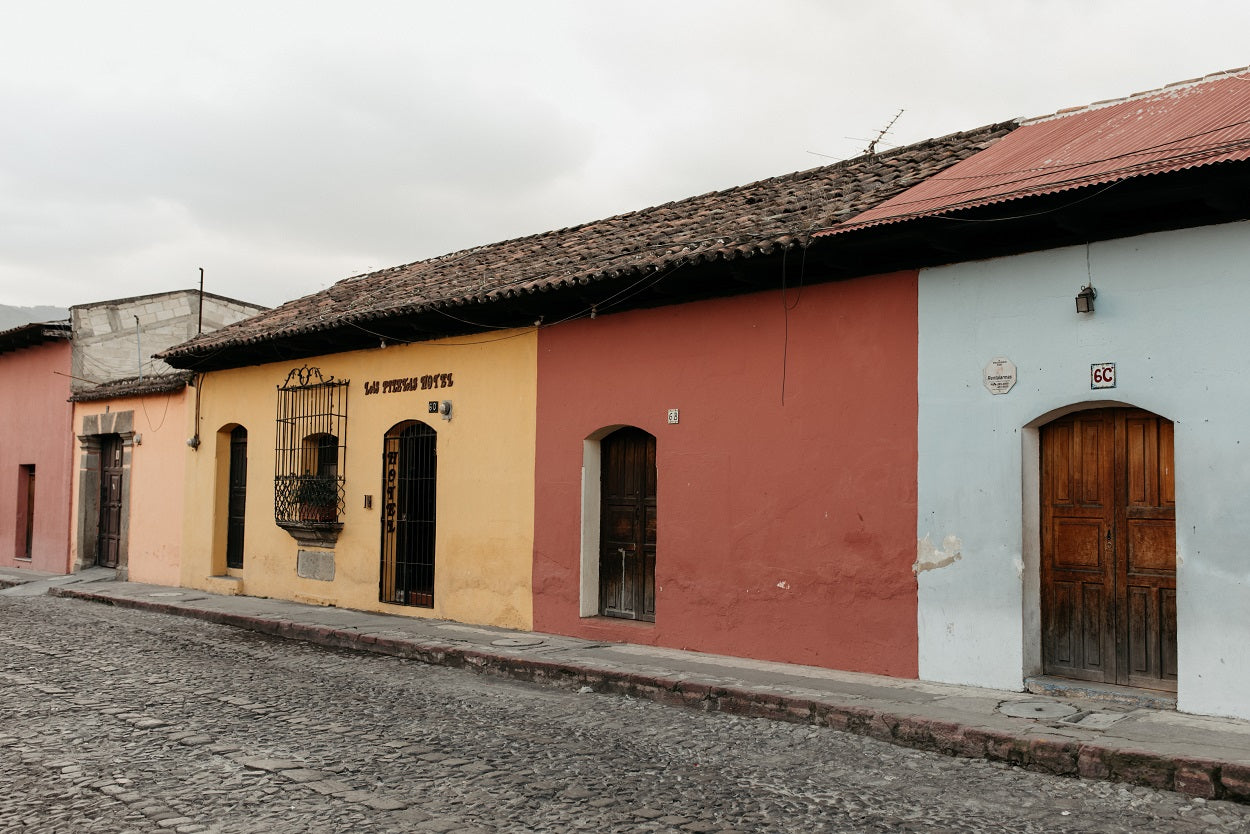
Most Spanish language learners are introduced to the beast that is “Ser & Estar” early on in their studies. It is perhaps the first big “aha” moment when they realize that, while Spanish is a relatively easy language for native English speakers to learn, they are going to have to wrap their minds around concepts completely foreign to the English language and the way it’s structured.
The good news is that Spanish is a fairly well thought out language with clear rules (and plenty of exceptions) that will make it easier to solidify and expand on your knowledge over time.
So what’s the deal with “Ser & Estar”?
The verbs "ser" and "estar" are two very important verbs in Spanish that both translate to the English verb "to be". The conjugations are irregular but easy to learn, as seen in this chart:

What most Spanish language learners struggle with is knowing when to use "ser" and when to use "estar". Many are taught a quick, but incomplete rule to use “ser” with things that are permanent and “estar” with things that are temporary. While this “trick” might help you use the correct verb 70% of the time, this shortcut keeps you from truly understanding the deeper meaning of people’s intended messages and will surely lead to grammatical errors and possible misunderstandings with native Spanish speakers.
We encourage you to learn the following rules and not look at them as this exhausting barrier between you and your Spanish language goal, but rather view them as an incredible tool that will allow you to have deeper and more meaningful conversations with Spanish speakers.
Let’s get started with “ser”:

- La fiesta es el sábado a las 4:00 de la tarde. The party is on Saturday at 4:00 pm.
- Son las 8:00 de la mañana. It’s 8:00 in the morning.
- Nuestro viaje es en octubre. Our trip is in October.
- ¿Qué hora es? What time is it?
ORIGEN
When referring to one’s nationality we always use the verb “ser”. For example:
- Yo soy de Sacramento, California. I am from Sacramento, California.
- Ella es cubana. She is Cuban.
- Nosotros somos de Chile. We are from Chile.
- Ellos son guatemaltecos. They are Guatemalans.
- ¿De dónde eres tú? Where are you from?
PROFESIÓN
When discussing one’s profession we use the verb “ser”. However, it’s worth noting that when asking what one does for a living we often use the following phrases. ¿A qué te dedicas? or ¿Cuál es tu profesión? An easy way to answer this question is by using “Soy” (I am) + the noun related to your profession such as maestro, abogada, cocinero, etc. For example:
- Yo soy músico. I am a musician.
- Somos estudiantes de medicina. We are med students.
- Ellos son carpinteros. They are carpenters.
RELIGIÓN
Religion follows the same rule as professions and we use ser exclusively when discussing one’s religion, despite the fact that in theory it can change throughout one’s life and therefore breaks with the idea that “ser” is used only for permanent things. Also, please note that religions are not capitalized in Spanish.
- Tú eres católico. You are Catholic.
- ¿Usted es cristiano? Are you Christian?
- Ellos son judíos. They are Jewish.
- Somos musulmanes. We are Muslim.
DESCRIPCIÓN
This is a tricky one because “estar” is used when giving an opinion and often times the line between a description and an opinion can be subtle. Here, we will share some examples of descriptions using “ser” and later in this post we will look at opinions with “estar” and provide additional examples to compare and contrast these two concepts.
- La casa de María es muy grande. Maria’s house is very big.
- Yo soy joven e inteligente. I am young and intelligent.
- Ellos son personas muy graciosas. They are very funny people.
- Tú eres muy amable y sincero. You are very kind and sincere.
- Mi papá es fuerte y serio. My dad is strong and serious.
- La comida mexicana es picante. Mexican food is spicy.
- Mi tarea en la universidad es muy difícil. My homework for the university is very hard.
UBICACIÓN
The last of the primary categories that require the use of “ser” is when you are talking about the location of an event or activity. This gets tricky because “estar” is used to describe the location of people, objects and even buildings (usually in relation to the location of another building or object). Here are some examples of “ser” being used to express ubicación of a specific event or activity.
- El partido del fútbol es en el estadio de Madrid. The soccer game is at the stadium in Madrid.
- La reunión familiar es en la casa de mi tía. The family reunion is at my aunt’s house.
- El retiro de yoga es en San Marcos la Laguna en Guatemala. The yoga retreat is in San Marcos la Laguna in Guatemala.
Now, let’s look at “estar”:

It’s understandable why many students associate “ser” with permanence and “estar” with something temporary seeing as 7/10 times that rule applies. In the case of “estado emocional” you are referring to a temporary state of being in which case you use “estar”.
For example:
- Estoy muy triste porque extraño a mi perro. I am very sad because I miss my dog.
- ¿Cómo estás hoy? How are you today?
- Nosotras estamos muy felices. We are very happy.
POSICIÓN
We also use “estar” when discussing the position or current location of a person, animal, object, building, or place. So if you want to ask someone where they are, explain to someone where an object is located, or confirm the location of a particular business or site of interest, you would use “estar”. Let’s look at some examples!
- Yo estoy en el gimnasio ahora mismo. I am at the gym right now.
- Su mochila está sobre la mesa en el cuarto de visitas. Your backpack is on the table in the guest room.
- ¿Dónde están las llaves? Where are the keys?
- La panadería está en la esquina de la 4ta Avenida y 3ra Calle. The bakery is on the corner of 4th Avenue and 3rd Street.
- Ellos están en Quito, Ecuador por dos semanas. They are in Quito, Ecuador for two weeks.
OPINIÓN
This next use of “estar” can be confusing for the beginner, and even intermediate level students to get used to, especially if introduced later on after they’ve already drilled the concept of “ser” being used for descriptions into their heads. We suggest actively working in the use of “estar” to express an opinion to your daily Spanish conversations. Let’s look at some examples and compare “ser” and “estar”.
- ¡Qué linda estás hoy! You look so nice today! (ESTAR)
- La hija de ellos es muy linda. Their daughter is very cute/beautiful. (SER)
In the example above, in the first sentence the person is expressing their opinion of how someone looks today. The person likely “es linda” all the time but in this instance, the speaker is emphasizing how great they look, in their opinion, at that particular time.
- Muchas gracias Sra. Ramirez, la comida está muy rica. Thank you very much Mrs. Ramirez, the food is really delicious. (ESTAR)
- La comida de la Sra. Ramirez es muy rica. Mrs. Ramirez’s food is very delicious. (SER)
In the example above, in the first sentence the speaker is expressing their opinion over Sra. Ramirez’s food, most likely while or shortly after eating it. In the second sentence, the speaker is presenting a fact that “Mrs. Ramirez’s food is very delicious”. Though of course, this could still be subjective, the use of “ser” removes the speaker’s personal opinion from the statement and turns it into a claim that most people would agree with.
- ¡Guau qué grande está la casa de los Garcia! Wow, the Garcia’s house is so big! (ESTAR)
- La casa de los García es muy grande. The Garcia’s house is very big.
In this last example, you can once again see that both “la casa de los Garcia está muy grande” and “la casa de los Garcia es muy grande” are grammatically correct. The first one implies that the speaker’s opinion of the house is that it is large, whereas the second version is a more neutral sentence that states a description of the house that would be universally accepted by most people based on societal norms.
SITUACIÓN TEMPORAL
Temporary situations such as being sick, pregnant, asleep, busy, injured, and so forth require the use of the verb “estar” just like emotional states do. Let’s look at some examples:
- Ella está embarazada. She is pregnant.
- Yo estoy muy cansada después de trabajar 10 horas. I am very tired after working for 10 hours.
- Ellos están ocupados con sus estudios. They are busy with their studies.
- ¿Tú estás bien? ¿Estás herido? Are you ok? Are you hurt?
ESTADO CIVIL
While many like to think of marriage as permanent and “forever”, perhaps the Spaniards were more progressive than we thought because Spanish speakers typically use “estar” when referring to one’s marital status. However, you will hear people use “ser” with the word “casado/a” and native speakers will accept either use without question. Let’s look:
- Estoy casada. I am married.
- Él está casado con María. He is married to María.
- Ellos están casados. They are married.
As mentioned above, you may hear someone say “Soy casado/a” which would translates to “I am a married man or woman” therefore changing the meaning of the sentence slightly from “Estoy casada”. With the word “divorciado/a” it functions the same as “casado/casada” where you can hear both “estar” and “ser” used depending on the context of the conversation. Curiously, with “soltero/a” (single) it’s most common to use “ser”, though you may hear “estar” used as well. In short, both are acceptable and it may vary depending on the context of the conversation as well as country and region.
VIVO & MUERTO
A final and somewhat curious use of “estar” is when referring to someone being alive (vivo/a) or dead (muerto/a). In English we perceive death as a permanent state of being which may lead Spanish learners to think that “ser” would be the verb used to describe one’s state of life, however, according to the grammar rules of Spanish, the correct verb is “estar”. For example:
- Lamento decirle que José está muerto. I am sorry to tell you that José is dead.
- Ella está muerta desde hace tres semanas. She’s been dead for three weeks.
- ¿Estás vivo? Are you alive?
It’s important to note that while the sentences above are grammatically correct, we typically use other expressions to discuss one’s passing that are not as harsh or direct. So instead of saying “está muerto” (he’s dead) we would often say “El falleció” or “Se murió” which would be closer to “He passed away” or “He died”.
Also, we will sometimes use “muerto y muerta” to express when we are really tired. For example, after a long day at work one could get home and say to their spouse or friend “Uff, estoy muerta hoy” which would be like saying “I’m dead tired today”.
¡Muy bien! We hope this blog post has been helpful. For a complete lesson on “ser” and “estar” check out our online Básico I Travel Spanish course or feel free to drop a comment below or email us at hola@theheartoftravel.org with any questions, comments, doubts or suggestions!


Comments (0)
Back to News